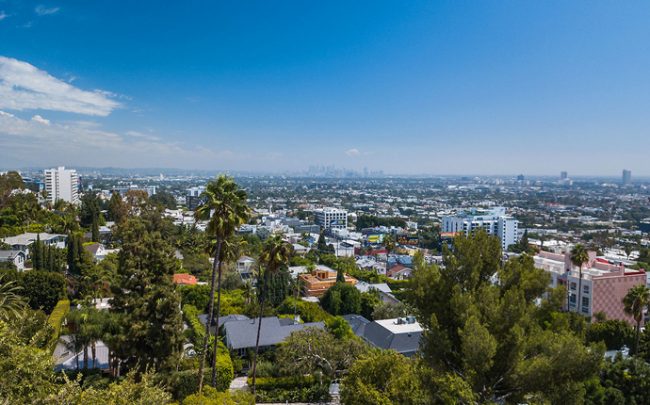Finding a buyer for a 1.5-acre residential portfolio in Sunset Strip has proved far more difficult than expected.
When the owner of the portfolio first pondered a sale in 2017, selling the three contiguous lots in one deal seemed like a wise choice. The market was hot, and developers had been paying top-dollar for tear-down properties they could transform into multi-million-dollar mansions.
But when the listing broker’s advised breaking them up in order to attract more buyers, the St. Ives Drive homes hit the market in October 2017 for $16.5 million, $7.3 million and $6.3 million. There were no takers and in January, prices were lowered. A second price chop last month dropped the asking to $12.5 million, $5.5 million and $3.9 million, respectively.
How low can they go?
Amid a nationwide cool-down in the housing market, even wealthy buyers in Los Angeles are in no particular hurry to jump at the first or second price cut. Now, sellers and their brokers have begun coming up with other solutions to move properties that have been languishing for months or longer.
As a way to draw attention to the Sunset Strip properties, the buyer’s agent will get a full 3 percent commission compared to the 2.5 percent cut.

The view from St. Ives compound Sunset Strip (Credit: Nourmand)
The broker on the listing, Michael Nourmand, said they are among a handful of luxury homes offering a bigger commission for agents. The split would have been unheard of two or three years ago, he said. Now, it’s necessary.
“It definitely catches the agent’s attention,” said Nourmand, of Nourmand & Associates. Adding, “it definitely helps.”
But that’s just one of the tactic sellers and brokers are using to avoid constant price chops, a move that can also send a signal to potential buyers that a property is undesirable.
With the encouragement of a savvy broker, sellers are also increasingly paying a percentage of closing fees — which could mean thousands of dollars — or agreeing to a buyer’s risky contingencies, in order to encourage a sale. Often, these incentives are being employed for houses under $10 million, brokers said.
Ladd Jackson, an agent at Hilton & Hyland, said a seller paying some of the buyer’s closing fee is an accepted practice. While it tends to vary, sellers might pay a chunk of the fees, which typically range from 2 to 5 percent of the purchase price.
“We didn’t see that for many years and all of a sudden, it’s been popping up a lot” Jackson said.
In other cases, sellers are agreeing to contingencies where the deal will depend on the buyer selling his or her own home first.
Nourmand said he’s had three recent deals in Westside, Beverly Hills Post Office and Sunset Strip where he’s seen such contingencies in place. In that case, a way to compensate for some of the risk, buyers will typically offer a bit more than the asking price on the home, he added.
“If you would’ve told someone that two or three years ago, they would have laughed at you,” Nourmand said.
The creative solutions are a response to the undeniable slowdown in L.A.’s luxury home sales, a stark contrast to those go-go days, when it was perhaps the hottest market in the country. In the first quarter of 2016, there were 118 single-family luxury home sales, according to a report from Douglas Elliman. This year, that number has dropped to 57 sales, a 31 percent decrease from last year.
With that reality having set in, some sellers are going as far as providing financing for a deal.
Joyce Rey, a luxury agent at Coldwell Banker, said she recently sold an $11 million home in Hidden Hills where the seller provided a loan to the buyer to help close the deal. The 9,500-square-foot home had been on and off the market since 2017, according to records. Rey said she hadn’t seen that financing arrangement since the 1980s.
Brokers said they have also seen an uptick in home stagings to attract attention and separate from the competition. Some of the more elaborate open houses have also taken on a carnival-like atmosphere with camels, a cannabis edibles bar and fire dancers.
Sellers who have had trouble adjusting to the new normal in the luxury market are now beginning to consider other options to close the deal, Jackson said. It wasn’t so long ago that a seller had 10 offers on the first day of listing the property. But those days are gone.
“Buyers are getting more picky because they can be, and sellers see that,” he said. “They’d rather get more for it by doing something than let the property drop in price five or six times.”
